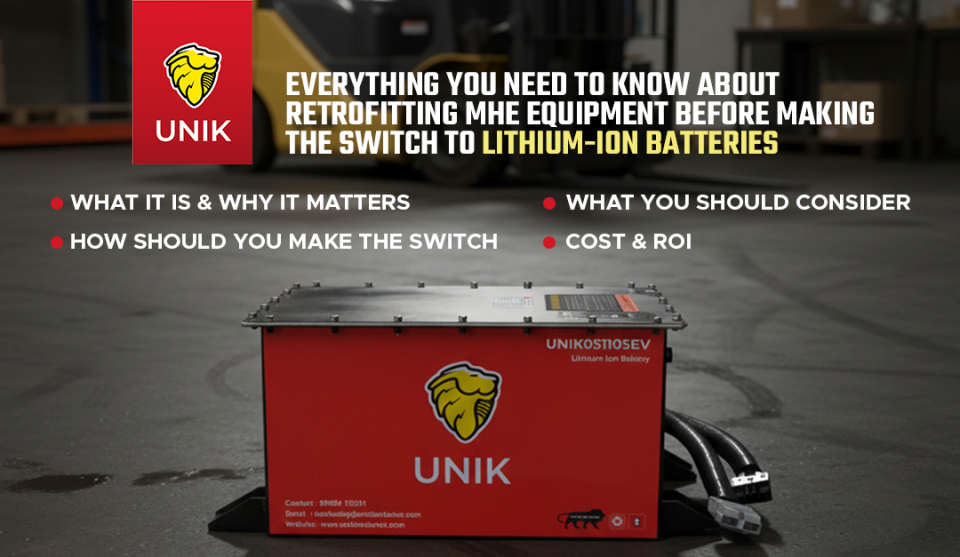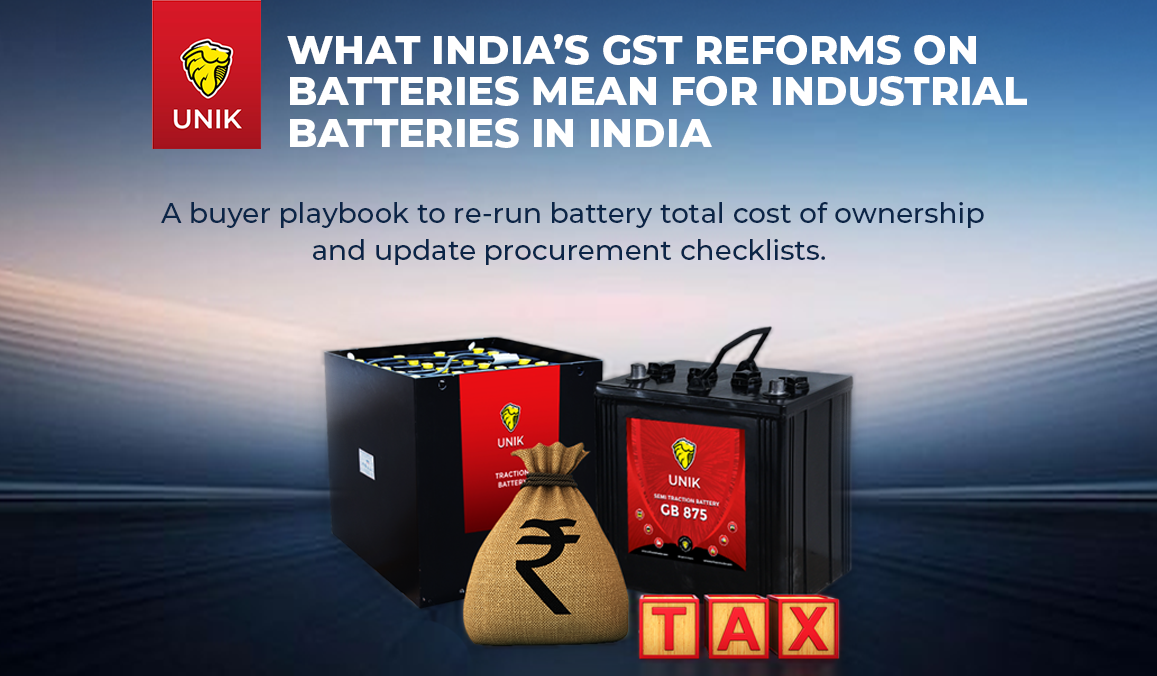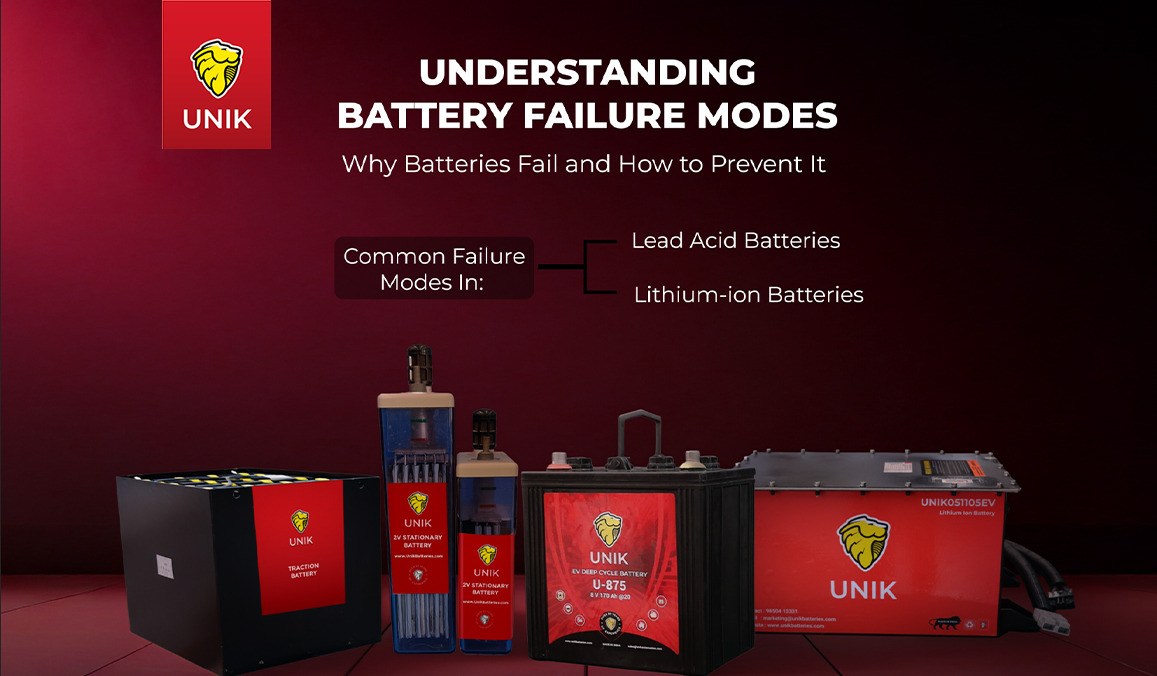Caring for Your Forklift Battery in the Winter
When it comes to powering industrial equipment, the choice of battery plays a crucial role in ensuring efficiency and reliability. Traction and semi-traction batteries are key players in this arena, each designed to meet specific operational needs. This blog delves into what these batteries are and their applications in industrial settings.
What are Traction Batteries?
Traction batteries are specialised rechargeable batteries used to power heavy-duty industrial equipment. Unlike traditional starter batteries, they are engineered to provide reliable and consistent power over extended periods, making them suitable for applications that require deep discharges and frequent recharging.
These batteries are typically made up of several cells connected in series, with the most common types being lead-acid traction batteries and lithium-ion.
Lead-acid traction batteries are favored for their cost-effectiveness and durability, whereas lithium-ion traction batteries are sought after for their high energy density and lower maintenance requirements.
What are the Applications of Traction Batteries?
Traction batteries are widely used for rigorous applications in sectors, such as golf carts, renewable energy systems, medical equipment, and power backup systems.
Material handling and industrial applications benefit significantly from these batteries. Traction batteries for material handling equipment are used for powering forklifts, pallet jacks, and other material-handling equipment. The high capacity and durability of lead-acid traction batteries and lithium-ion traction batteries make them perfect for these tasks. They ensure reliable performance and longevity in demanding environments, including warehouses and factories that rely on robust power supply.
What are Semi-traction Batteries?
Semi-traction batteries, also known as monobloc batteries, are engineered for exceptional performance in industrial settings where consistent power is required over extended periods. These batteries are specifically designed to handle repetitive and intense cycle use. A semi-traction battery is constructed with multiple electrically connected cell compartments containing electrodes, electrolytes, terminals, and separators. These cells can be arranged in series or parallel configurations to tailor the battery's performance to specific applications. Semi-traction batteries are engineered to endure harsh conditions, including wide temperature fluctuations (-30°C to 60°C) and exposure to shocks and vibrations.
What are the Applications of Semi-traction Batteries?
Semi-traction batteries are versatile and provide dependable power for various applications where the energy demand is moderate and consistent, but not as intensive as in heavy industrial use. These batteries are particularly effective in settings where a reliable energy source is needed over an extended period.
They may be used for less intensive off-grid solar power systems and energy storage applications. Semi-traction batteries are particularly advantageous in golf carts and industrial cleaning equipment. Golf carts benefit from the battery’s ability to endure frequent discharge cycles, vibrations, and temperature variations, providing reliable power in varied conditions. Similarly, semi-traction batteries excel in industrial cleaning equipment, such as floor scrubbers, where they provide the necessary power to operate efficiently over long periods, withstanding the rough conditions typical in industrial environments.
In the world of industrial equipment, the choice between traction and semi-traction batteries can significantly impact operational efficiency and longevity. Traction batteries provide robust, reliable power for heavy-duty applications, such as material handling equipment, while semi-traction batteries offer a dependable solution for moderate energy needs, like those found in golf carts and cleaning machines. By selecting the right type of battery for each specific application, businesses can ensure uninterrupted operations, reduce downtime, and maintain consistent performance in all conditions.
UNIK recognises the diverse battery needs of different industries and is here to help you find the perfect fit.
Contact us today to learn how our battery solutions can power your success.






